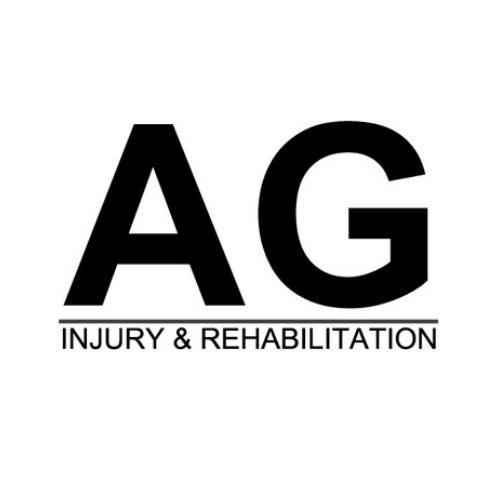Did you know that roughly 25,000 people sprain their ankles every day in the United States alone? This common injury, while seemingly simple, can take anywhere from a few weeks to an entire year to heal properly, depending on its severity and how well it's treated.
Whether you're an athlete eager to get back in the game or someone who twisted their ankle stepping off a curb, understanding the recovery timeline for an ankle sprain is crucial. The right approach to healing can mean the difference between a quick bounce-back and months of lingering discomfort.
Definition of an Ankle Sprain
An ankle sprain happens when the ligaments in your ankle get stretched or torn, typically during sudden movements or awkward landings. This common injury occurs in both athletes and non-athletes, affecting the strong bands of tissue that hold your ankle bones together.
The most noticeable signs of an ankle sprain include immediate pain at the injury site, swelling around the ankle joint, and tenderness when touching the area. Many people also notice bruising develop within the first few days after the injury. In some cases, you might hear or feel a "pop" when the injury occurs.
Getting the right treatment for an ankle sprain is essential for proper healing and preventing future problems. Without proper care, a sprained ankle can lead to ongoing ankle weakness and repeated injuries, making it harder to stay active and mobile.
Types and Grades of Ankle Sprains
Most ankle sprains happen when the foot rolls inward (inversion sprain), stretching or tearing the outer ankle ligaments. Less common are eversion sprains, where the foot turns outward and affects the inner deltoid ligament.
Doctors classify ankle sprains into three grades based on severity. Grade 1 sprains involve minor stretching of the ligaments, with mild pain and swelling. Grade 2 sprains show partial ligament tears, creating moderate pain and reduced ankle stability. Grade 3 sprains represent complete ligament tears, resulting in severe pain and significant ankle instability.
The grade of your sprain affects how long you'll need to heal. Grade 1 sprains typically take 1-3 weeks, Grade 2 sprains need 3-6 weeks recovery, and Grade 3 sprains might require several months for full recovery. Some severe cases can take up to a year to heal completely.
Typical Recovery Timelines for Different Grades of Sprains
Each grade of ankle sprain needs its own healing time. A Grade 1 sprain takes about 1-3 weeks to heal, letting you walk normally once the pain drops. Grade 2 sprains need 3-6 weeks of healing time, with a gradual return to regular activities as your ankle gets stronger.
The most severe Grade 3 sprains can take several months to heal properly. Some people might need 6-12 months for recovery before their ankle feels completely normal. Your healing speed depends on factors like your age, overall health, and how well you follow your treatment plan.
Previous ankle injuries can slow down your healing time, as can skipping recommended exercises or returning to activities too quickly. Stick to your doctor's advice and physical therapy plan to get back on your feet in the shortest safe time frame.
Factors Affecting Recovery Time
Several things influence how fast your ankle heals after a sprain. The severity of the injury plays a big role - mild sprains heal faster than complete ligament tears. The more damaged your ligaments, the longer you'll need to rest and rebuild strength.
Your age and overall physical condition affect healing speed too. Younger people often bounce back more quickly, while older adults might need extra time. Good nutrition and regular exercise habits before the injury can help speed up recovery.
Following your treatment plan makes a huge difference in healing time. Skipping recommended exercises or returning to activities too soon can slow down recovery or lead to re-injury. If you've had previous ankle sprains, you might need more time to heal since the ligaments may already be weakened from past damage.
The RICE Method for Initial Treatment
The RICE method for sprains stands as the standard first-aid approach for ankle sprains. Rest stops further damage by keeping weight off the injured ankle. Take a break from walking or limit movement to essential activities only.
Ice treatment helps reduce pain and swelling when applied for 15-20 minutes at a time, several times daily. Place a thin towel between the ice pack and your skin to protect it. For the first 48-72 hours after injury, ice your ankle every 2-3 hours while awake.
Compression involves wrapping the ankle with an elastic bandage, starting at the toes and working upward. The wrap should feel snug but not tight enough to limit blood flow. Keep the ankle raised above heart level whenever possible, especially during sleep and rest periods. Elevation helps reduce swelling by letting gravity move fluid away from the injury site.
Phases of Ankle Sprain Recovery
The healing process for ankle sprains follows three main phases. The acute phase starts right after injury and lasts 3-5 days. During this time, the focus stays on reducing pain and swellingthrough basic treatments like rest and ice.
Next comes the rehabilitation phase, which typically runs for 1-3 weeks. This phase starts once the initial swelling drops. Physical therapists work with patients on gentle stretching and movement exercises to improve flexibility. They might include ankle circles, toe curls, and basic range-of-motion activities.
The final return-to-activity phase begins when you can move your ankle without pain. This stage varies based on your sprain type - Grade 1 sprains might reach this phase in 2 weeks, while Grade 3 sprains could take months. You'll work on strengthening exercises and gradually return to normal activities as your ankle stability improves.
Physical Therapy and Rehabilitation Exercises
Physical therapy plays a key role in ankle sprain recovery. Basic exercises include ankle alphabets, where you "write" the alphabet with your toes to improve motion range. Calf stretches and heel raises help build strength in the supporting muscles around your ankle.
Resistance band exercises add controlled pressure to strengthen ankle muscles in all directions. These exercises start with light resistance and progress as your ankle gets stronger. Simple movements like pointing your toes up and down or side-to-side with the band help target specific muscle groups.
Balance exercises become important as your ankle heals. Standing on one foot, first on a firm surface and later on softer surfaces, helps improve stability. Walking on your heels or toes builds ankle control, while standing on a balance board develops better joint awareness and reduces future injury risk.
Tips for Speeding Up Recovery
Following the RICE protocol for sprains in the first few days after injury helps minimize swelling and pain. Apply ice packs for 15-20 minutes every 2-3 hours, and keep your ankle wrapped and raised when resting.
Good nutrition supports healing - eat plenty of protein-rich foods and vitamin C to help repair damaged tissues. Stay hydrated by drinking water throughout the day, as proper fluid balance aids tissue repair and reduces swelling.
Do your physical therapy exercises as prescribed, even when they seem simple. Start with basic movements like ankle circles and toe curls, then build up to more challenging exercises as pain decreases.
At home, gentle self-massage around the injury site can help reduce stiffness. Avoid activities that cause pain, and don't rush back to sports before your ankle feels stable. Using a supportive ankle brace during daily activities can provide extra stability while healing.
When to Seek Medical Attention
Some ankle sprains need immediate medical care. Go to a doctor if you can't put any weight on your injured foot or if the pain is intense. Watch for severe swelling and pain that doesn't improve after 2-3 days of home treatment.
Get checked out if you notice signs of infection like unusual warmth around the ankle, redness spreading beyond the injury site, or fever. These symptoms could point to a more serious problem that needs quick treatment.
You should also see a medical professional if you hear a popping sound when the injury happens or if the ankle looks misaligned. These signs might mean you have a worsening ankle injury rather than a simple sprain. People with diabetes or blood vessel problems should get all ankle injuries checked by a doctor since their healing process often needs special monitoring.
Potential Complications of Untreated Ankle Sprains
Not treating an ankle sprain properly can lead to lasting problems with your ankle. Many people who skip proper treatment end up with chronic ankle instability, making their ankles feel loose and wobbly during everyday activities.
Without proper healing time and rehabilitation, you might face ongoing pain and weakness in your ankle. This makes it harder to walk, run, or play sports. The weakened ankle also becomes more likely to get hurt again, creating a cycle of repeated injuries.
Long-term effects can include early arthritis in the ankle joint, especially if you've had multiple sprains that weren't treated well. The damaged ligaments and repeated inflammation can wear down the joint surfaces over time, leading to stiffness and reduced motion. These issues often show up months or years after the original injury, making proper initial treatment essential for preventing future ankle problems.
Return to Sports and Physical Activities
Getting back to sports after an ankle sprain requires careful planning. Your ankle needs full range of motion, normal strength, and good stability before resuming athletic activities. Most athletes can return to their sport when they can hop, jump, and run without pain.
Start with low-impact activities like swimming or stationary cycling to maintain fitness while your ankle heals. These exercises help you stay in shape without putting too much stress on your injured ligaments. As your ankle gets stronger, add sport-specific movements gradually.
Many players benefit from wearing an ankle brace or tape during their first few weeks back in action. This extra support helps prevent re-injury while the ligaments continue strengthening. Listen to your body during this process - any sharp pain means you should scale back your activity level. A proper return-to-play program might take several weeks, but rushing back too soon often leads to repeated injuries.
Prevention Strategies for Future Ankle Sprains
Building ankle strength helps stop sprains before they happen. Basic exercises like standing on one foot, performing heel raises, and using resistance bands make ankles more stable. Practice these movements 3-4 times weekly to maintain good ankle health.
Choose shoes that fit well and match your activity. Athletic shoes should have good arch support and ankle stability. Replace worn-out shoes regularly, as they lose their protective features over time. For sports with lots of jumping or quick direction changes, consider high-top shoes for extra ankle protection.
Add balance exercises to your routine. Try standing on one foot while brushing teeth or doing simple tasks. Progress to more challenging surfaces like foam pads or balance boards. This improves your body's ability to react quickly when your ankle starts to roll.
Regular stretching keeps ankles flexible. Focus on calf muscles and Achilles tendons, as tight muscles increase sprain risk. Remember that proper form during sports and exercise also plays a big role in preventing future injuries.
The Road to Full Recovery
A sprained ankle might seem like a minor setback, but proper attention to recovery can prevent a lifetime of ankle issues. By following recommended treatment protocols, staying patient with the healing process, and gradually returning to activities, most people can expect a full recovery. Remember, the time invested in proper healing pays dividends in preventing future injuries.
While recovery timelines vary based on injury severity and individual factors, maintaining a positive attitude and staying committed to your rehabilitation program are key components of successful healing. Don't rush the process – giving your ankle the time it needs to heal completely will help ensure you return to your activities stronger and more resilient than before.


